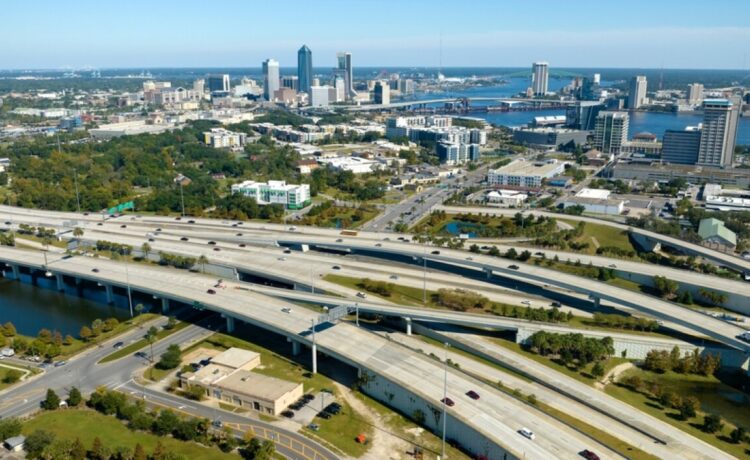For years, tech optimists and regional leaders have hoped for what AOL co-founder Steve Case calls the “the rise of the rest”—the growth of substantial tech ecosystems far from the Bay Area and into the “rest” of the country. However, it wasn’t really happening.
Or at least, it wasn’t happening in terms of cities’ shares of the national tech industry. Tech was instead concentrating even more in a short list of well-established “superstar” tech employment hubs. Right up into the pandemic recession, “winner-take-most” dynamics were stuck in place.
Yet now, the pattern may be shifting. For the first time in more than a decade, digital activity seems to be spreading out. Specifically, the list of metro areas increasing their share of the nation’s tech sector (as defined by five key digital services industries ranging from software development and computer systems design to web publishing) is now dominated by a group of non-superstar cities wholly different from the Big Tech meccas that ruled for years.
The contrast is stark. In the 10 years prior to the pandemic, the list of metro areas that grew their share of the nation’s digital services sector was commanded by the usual Big Tech towns: San Francisco; San Jose, Calif.; Austin, Texas; and Seattle. New York, Boston, and Los Angeles were also growing briskly.
Between 2020 and 2022, however, the story drastically changed. San Francisco and San Jose disappeared from the list of metro areas gaining the highest shares of digital employment. Supplanting them have been vibrant “rising star” metro areas such as Dallas, Denver, Miami, and Salt Lake City.

Rounding out recent years’ top 10 metro areas for growth in digital services employment share are relative tech newcomers such as Provo, Utah; Nashville, Tenn.; Houston; and Jacksonville, Fla. Places like these—with their major universities and Sun Belt in-migration—represent the nation’s rising stars of tech. Meanwhile, San Francisco and San Jose fell into the bottom 10 of this list; for the first time in decades, they actually saw their share of the nation’s tech sector employment fall, given their relatively tepid employment growth at a time when other places were surging.

What do these industry shifts say about the nation’s bifurcated tech geography? At least for the moment, the spread of top-tier digital employment beyond the standard superstar hubs and into up-and-coming regional centers offers hope for a more balanced and geographically inclusive U.S. tech economy.
Over the last decade, the “winner-take-most” geography of tech has tended to create stark divisions and demoralize the places left-behind. Even in promising tech hubs, enthusiasm about new innovations has been hard to maintain, given that true tech stardom was mostly located in the dynamic superstar cities elsewhere.
Now, though, there seems to be a moment of reorientation—and opportunity for new places and the country as a whole. To be sure, the current gold rush surrounding powerful “generative” artificial intelligence remains highly concentrated in a few Big Tech towns, with one-quarter of those job postings located in the Bay Area, and 60 percent in just 20 metro areas. But with that said, AI employment remains small in comparison to the rest of the digital sector.
Meanwhile, other new trends are facilitating digital growth in more and different places.
For one, the waning social media bubble combined with higher interest rates and a new focus on “efficiency” has tamped down the super-sizing of Big Tech headquarters growth—leaving regional growth to play a proportionately larger role. For another, a welcome “big build” of private investment—some “reshored” or “localized” from abroad—broke out across the country in 2021, with promising benefits for “the rise of the rest.” Since then, the new funding surge has yielded more than $230 billion in private semiconductor and electronics manufacturing investments as well as tech and digital services spending—much of it distributed widely across the county. Many of these investments will in turn attract other regional investments in job-intensive ancillary industries such as computer systems design.

Nor is that all. Beyond the private investment boom, sizable portions of the $3.8 billion in landmark economic development legislation from the last Congress will channel billions of additional government (and also private) investment into new and “rising star” metro areas in the heartland, South, and Mountain West. Most notably, the $250 billion CHIPS and Science Act will promote the “rise of the rest” given its focus on tech activation, including through “place-based” industrial policy focused explicitly on areas that haven’t fully participated in the nation’s superstar-based technology boom.
In this regard, the numerous finalists and upcoming winners of federal investment competitions such as the National Science Foundation’s Regional Innovation Engines program and the Economic Development Administration’s Regional Technology and Innovation Hubs initiative could well accelerate the emergence of technology-based economic development in more communities across the nation. These programs can also catalyze additional state and local investments.
In short, recent trends—as well as deliberate federal, state, and local policies—are finally raising the prospect of a healthy decentralization of the nation’s hyper-clustered digital sector. At a time when the nation badly needs to reconnect left-behind people and places to greater prosperity, this is very good news.
This article was first published by Brookings. Read the original article.


